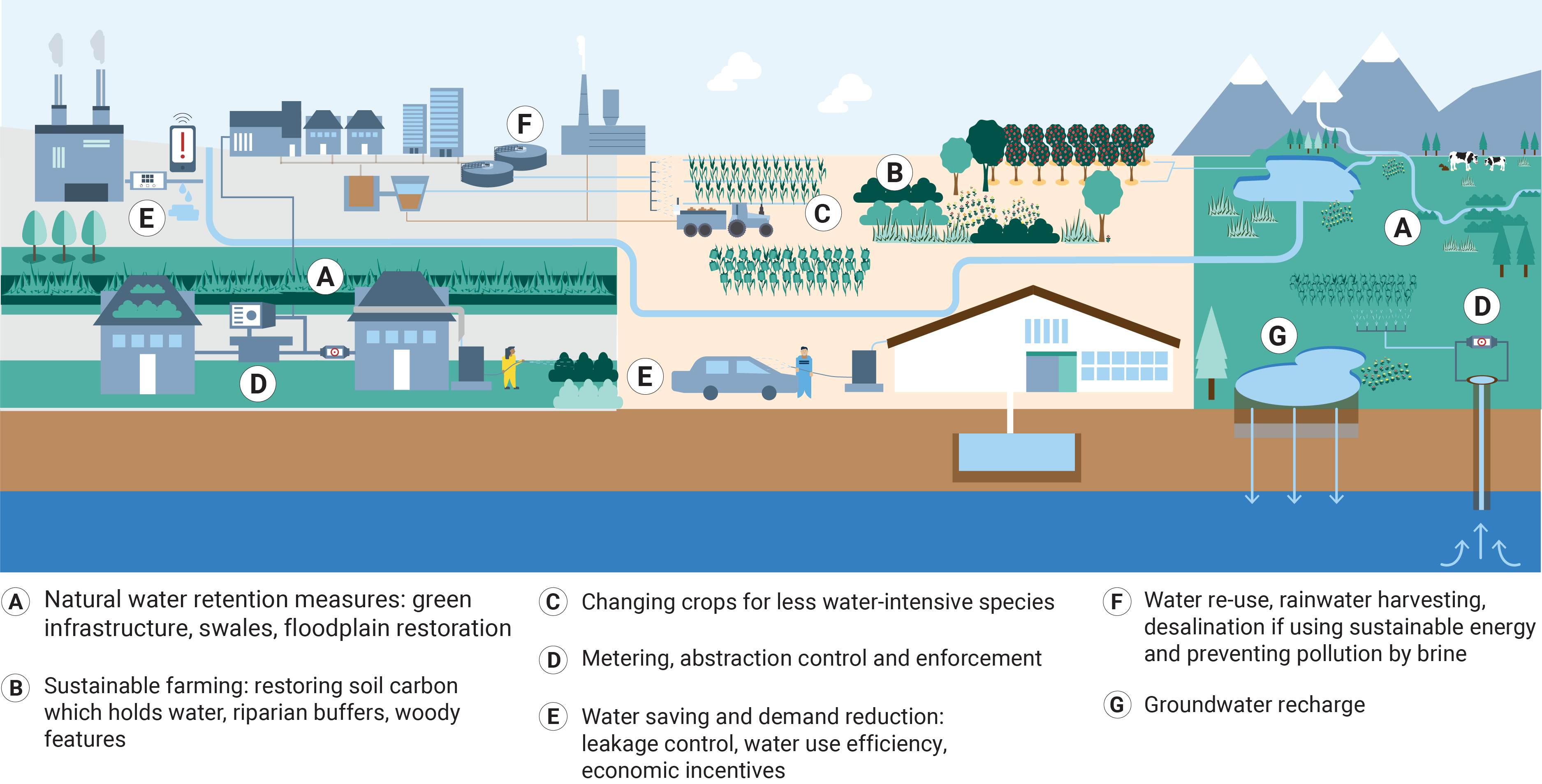Extreme climate events highlight the need for better water management
Extreme climate events highlight the need for better water management
Climate change is amplifying threats to our water
The EEA’s European Climate Risk Assessment shows that Europe is the fastest-warming continent worldwide, with droughts and floods becoming more intense and frequent. Projections show that overall annual rainfall will drop in southern and some western regions of Europe, leading to more water shortages. Even in regions where projected rainfall will remain stable or increase, there can be less precipitation in summer, reducing water availability.
Add to this the increasing threat of flash floods due to heavy bursts of rainfall. These are becoming more common and immediately threaten people’s homes and safety. Heavy rainfall can also impact groundwater levels: when too much rain comes at once, water cannot infiltrate the ground. Instead, it flows into rivers or storm sewers.
We have seen how floods can claim lives, and damage infrastructure and the economy. Floods can also pose a threat to water bodies themselves, potentially aggravating pollution in rivers, lakes and coastal waters. This is because floodwater can take raw sewage or other wastewater along with it, as well as industrial or agricultural pollutants like pesticides or other chemicals. This can impact water quality, notably through bacteria levels, as well as the health of fish, birds or plants.
Such polluted waters are also a health hazard for people swimming and bathing in them. This risk to bathing water quality can be expected to become more prevalent as climate change increases extreme rainfall frequency.
Climate change impacts on water
Longer dry periods and droughts will contribute to lower river flows, reduced groundwater levels and aquifer depletion. This in turn can affect water quality, increasing the risk of excessive nutrient accumulation and harmful algae blooms. If water demand is not adjusted to availability, lower rainfall may also affect water supply to households and economic activities like agriculture, industry, energy production and the use of inland waterways. Reductions in ice cover, melting of glaciers and less snow in mountain areas, which feed key European rivers like the Rhine, Danube or Po, only worsen the situation.
Improving water resilience is a high priority across Europe
Managing water stress and threats to water quality, including in light of the additional challenges posed by a rapidly changing climate, will be crucial in the years ahead for Europe. Today, water management practices around Europe are not sustainable enough. They cannot handle the rapid and large-scale change posed by climate change which is putting our water security under threat.
The key to success will be to boost our water resilience so that our societies can tackle the intertwined challenges concerning water. This means improving ecosystem health and restoring and maintaining the natural water cycle, for example, by working with nature to allow better water soak into the ground and replenish groundwater. It also entails improving water infrastructure and use to limit pollution and waste, and boost water reuse. The status of Europe’s water bodies needs to be improved so that they can withstand extreme weather conditions like heavy precipitation and droughts.
This task is already supported by many EU policies. Those focusing on water management aim to make our waters more resilient and able to support sectors particularly dependent on water, like agriculture, energy and inland shipping.
Better water management is also crucial. Some regions in Europe will see more competition between sectors that use water, like industry, farming or households. Sustainable water use also ensures enough water for ecosystems so that they can play their part in helping the water cycle function.
Addressing water scarcity, drought and flood pressures in Europe
Water efficiency will be a key part of managing water demand. In agriculture, work is already underway to develop crops that need less water, are more drought-resistant and can store water in soils. Water re-use can reduce reliance on rainfall and traditional water sources for irrigation. Setting targets and measures to encourage water saving or adjusting water prices for businesses and domestic use could improve water resilience, too.
For flooding, better awareness of flood-prone areas in cities, or of floodplains in the countryside, can help reduce damage to properties and risk to life. Early warning systems can help save lives, as well. Also, better land management can help prevent homes and industrial plants from being built near rivers, lakes or coastal areas that are at significant risk of flooding.
Nature-based solutions are already being put in place in many areas across Europe. For example, protecting, managing and restoring natural floodplains along rivers can lower flood heights. These areas can benefit local ecosystems as well as human well-being by providing extra green and blue spaces for recreation.



대화 참여하기